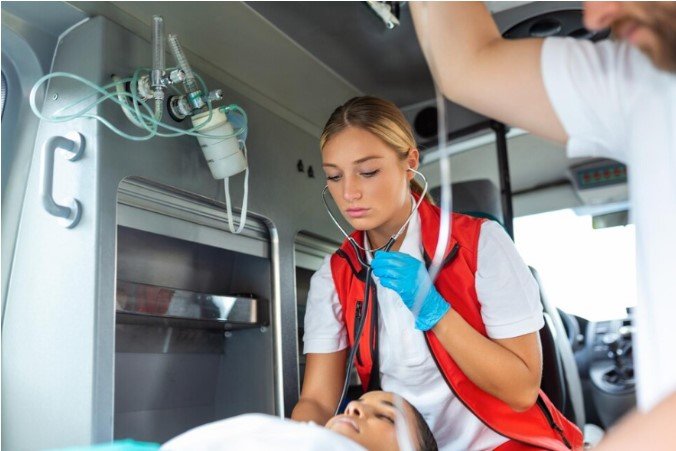Key Training in Emergency Medicine: Skills Course Essentials

Emergency medicine is a high-stakes field where timely and accurate interventions can mean the difference between life and death. Professionals in this area must be adept in a variety of skills to manage diverse medical emergencies effectively. This article delves into the essential components of emergency medicine training, focusing on the pivotal skills and courses that form the bedrock of proficient emergency care. A particular emphasis will be placed on the “emergency medicine skills course” and “central line training,” which are critical for developing and honing the competencies necessary for emergency medical practitioners.
The Importance of Comprehensive Training in Emergency Medicine
An emergency medicine skill course is a comprehensive and multifaceted course, addressing a wide range of medical scenarios that professionals may encounter. The training encompasses both didactic learning and hands-on practice to ensure that practitioners are well-prepared to handle the unpredictability and rapid decision-making required in emergency settings.
Core Components of Emergency Medicine Training
- Clinical Skills Development: Trainees must master various clinical skills, including advanced airway management, trauma care, and resuscitation techniques. These skills are fundamental for stabilizing patients in critical condition.
- Diagnostic Acumen: Rapid and accurate diagnosis is crucial in emergency medicine. Training programs focus on enhancing diagnostic skills through simulations and real-life scenarios, allowing practitioners to identify and manage life-threatening conditions promptly.
- Interdisciplinary Collaboration: Emergency medicine often involves working with a multidisciplinary team. Training emphasizes the importance of effective communication and collaboration with other healthcare professionals to provide comprehensive care.
- Crisis Resource Management (CRM): CRM principles are integral to emergency medicine training. These principles include leadership, teamwork, and decision-making in high-pressure situations. CRM training helps practitioners maintain composure and efficiency during emergencies.
Emergency Medicine Skills Course
An emergency medicine skills course is a cornerstone of training for aspiring emergency physicians. These courses are meticulously designed to cover a wide range of practical skills and procedures that are essential in the emergency department (ED).
Course Structure and Content
Emergency medicine skills courses typically include:
- Hands-On Workshops: These workshops provide trainees with the opportunity to practice various procedures on manikins and simulators. Procedures such as intubation, chest tube insertion, and suturing are commonly covered.
- Simulated Scenarios: Simulation-based training is a key component, allowing trainees to experience realistic emergency situations in a controlled environment. This approach helps build confidence and competence in managing acute medical and trauma cases.
- Didactic Sessions: Lectures and interactive discussions on topics such as cardiac emergencies, toxicology, and disaster preparedness complement the hands-on training. These sessions provide the theoretical foundation necessary for practical application.
- Assessment and Feedback: Continuous assessment and constructive feedback are integral to skills courses. Trainees undergo evaluations to identify areas for improvement and receive guidance from experienced instructors.
Central Line Training: A Crucial Component
Central line placement is a critical skill in emergency medicine, often required for administering medications, fluids, and for hemodynamic monitoring in critically ill patients. Central line training is therefore a vital part of the emergency medicine skills course.
Importance of Central Line Training
- Patient Safety: Proper central line insertion minimizes the risk of complications such as infections, pneumothorax, and vascular injury. Training ensures that practitioners can perform the procedure safely and effectively.
- Skill Proficiency: Central line placement requires precision and familiarity with anatomical landmarks. Through training, practitioners develop the proficiency needed to perform the procedure swiftly and accurately, even in high-pressure situations.
- Enhanced Confidence: Regular practice in a controlled environment builds confidence. When faced with real-life emergencies, practitioners can rely on their training to perform central line insertions with competence and assurance.
Training Methodologies
Central line schooling employs a number of methodologies to ensure comprehensive talent acquisition:
Simulators and Mannequins
High-constancy simulators and mannequins are used to duplicate the human anatomy, permitting trainees to practice needle insertion, guidewire advancement, and catheter placement in a sensible setting.
Ultrasound Guidance
Ultrasound-guided crucial line insertion is a desired method for improving accuracy and decreasing headaches. Training packages comprise the use of ultrasound machines, coaching trainees the way to visualize veins and manual the catheter placement.
Cadaver Labs
Some advanced schooling programs offer cadaver labs, offering an extraordinary opportunity to practice on human tissue. This level is helpful for knowledge of the tactile remarks and anatomical variations encountered in real patients.
Supervised Practice
Initial attempts at primary line placement are often supervised via experienced clinicians. This mentorship ensures that trainees get hold of immediate feedback and corrections, improving their getting to know and enjoy.
Other Essential Skills in Emergency Medicine
Beyond the emergency medication skills direction and significant line education, several different important capabilities are emphasized in emergency medicinal drug training programs:
Airway Management
Ensuring an open airway is a number one concern in emergency care. Training covers numerous strategies, consisting of bag-valve-mask ventilation, endotracheal intubation, and the usage of advanced airway devices like laryngeal masks.
Trauma Management
Trauma is a leading cause of morbidity and mortality. Emergency medication education includes the Advanced Trauma Life Support (ATLS) direction, which teaches systematic strategies to the preliminary assessment and management of trauma patients.
Cardiac Life Support
Proficiency in Basic Life Support (BLS) and Advanced Cardiovascular Life Support (ACLS) is important. These guides teach practitioners in recognizing and handling cardiac arrest, arrhythmias, and other cardiovascular emergencies.
Pediatric Emergency Care
Children give specific demanding situations in emergency medicinal drugs. Pediatric Advanced Life Support (PALS) training is important for coping with pediatric emergencies, consisting of breathing distress, shock, and resuscitation.
Point-of-Care Ultrasound (POCUS)
POCUS is a valuable diagnostic tool in emergency medication. Training packages educate the use of ultrasound for fast evaluation of conditions which include inner bleeding, cardiac tamponade, and belly aortic aneurysm.
Conclusion
Effective education in emergency medicine is vital for making sure that healthcare experts are equipped with the abilities and know-how important to offer exquisite care in crucial conditions. The emergency medicine competencies route, with its cognizance on practical tactics and simulated situations, bureaucracy the foundation of this training. Central line schooling, a key aspect of the abilities course, exemplifies the precision and knowledge required in emergency interventions.
By integrating hands-on practice, simulated reviews, and didactic getting to know, emergency remedy schooling applications put together practitioners to face the myriad challenges of the emergency department. These programs emphasize patient safety, diagnostic accuracy, and interdisciplinary collaboration, all of which are crucial for delivering finest emergency care. As the field of emergency medicinal drugs continues to evolve, ongoing education and schooling will continue to be pivotal in making sure that practitioners are always ready to meet the needs in their dynamic and important roles.












